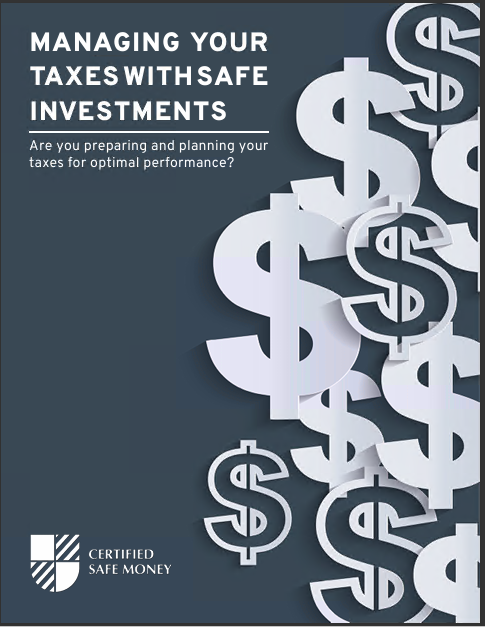2 Key Takeaways
-
Fixed annuities offer stable returns and guaranteed income, making them ideal if you’re looking for safety and predictability.
-
Understanding factors such as surrender periods, interest rates, and payout options is crucial to selecting the right fixed annuity.
Why a Fixed Annuity Could Be Your Best Friend
In today’s unpredictable financial landscape, finding stable, reliable investments might feel challenging. Fixed annuities stand out as attractive choices due to their promise of safety, guaranteed income, and steady returns. If you’re considering placing your hard-earned money somewhere secure, knowing a few essential facts beforehand can greatly improve your experience.
Let’s dive deep into six essential facts to keep in mind before deciding which fixed annuity best suits your financial plans.
Fact 1: What Exactly is a Fixed Annuity?
A fixed annuity is essentially a contract between you and an insurance company. You pay a lump sum or series of payments upfront, and in return, the company promises you a guaranteed interest rate for a defined period, often ranging from 3 to 10 years. After this accumulation phase, the annuity begins paying you a regular income, which can last a certain number of years or even your entire lifetime.
How Fixed Annuities Differ from Other Investments
Unlike stocks or mutual funds, fixed annuities don’t fluctuate with market volatility. Instead, your investment earns a fixed interest rate, unaffected by market downturns, providing predictable and secure returns. This stability makes fixed annuities particularly appealing if you’re nearing retirement or prioritizing financial security over risky growth.
Fact 2: Interest Rates Can Vary—Know How and Why
Fixed annuity interest rates aren’t one-size-fits-all. They depend significantly on current market conditions, your chosen insurer, the length of the annuity term, and even the amount you invest.
Understanding Interest Rate Terms
-
Initial Rate: Often higher, meant to attract new investors, but usually applicable only for the first year.
-
Renewal Rate: The rate applied after the initial term ends, which may be lower and influenced by the broader economic climate.
Be cautious—always inquire clearly about these terms to ensure your annuity remains profitable over the long run.
Fact 3: Be Mindful of Surrender Periods and Fees
A surrender period is a predetermined timeframe, typically between 5 to 10 years, during which withdrawing your money could incur hefty penalties, called surrender charges. These fees can significantly reduce your principal if you’re forced to withdraw funds early.
Smart Strategies to Avoid Surrender Charges
-
Evaluate Your Financial Liquidity: Before committing, make sure you won’t need quick access to these funds.
-
Plan for Emergencies: Maintain sufficient liquid savings separate from your annuity investment.
Careful planning ensures you can comfortably ride out the surrender period without stress.
Fact 4: Know the Different Income Payout Options
Fixed annuities typically offer various payout methods when the accumulation phase ends, each catering to different financial needs and goals.
Most Common Payout Options:
-
Lifetime Income: You receive guaranteed payments for the rest of your life, protecting against outliving your savings.
-
Period Certain: You receive payments for a specified period, such as 10 or 20 years. If you pass away before this period ends, the remaining payments typically go to your beneficiaries.
-
Joint and Survivor: Continues payouts to your spouse or chosen beneficiary after your passing.
Carefully weigh these options based on your retirement plans and family situation to maximize your benefits.
Fact 5: Tax Implications—Know What to Expect
One appealing aspect of fixed annuities is their tax-deferred nature. While your money grows, you won’t pay taxes on interest earned until you withdraw it.
Taxation During Withdrawal
-
Ordinary Income Tax: Withdrawals get taxed as ordinary income, not capital gains.
-
Early Withdrawal Penalty: If you withdraw before age 59½, you may face an additional 10% IRS penalty.
Make sure your annuity fits neatly into your overall retirement tax strategy to avoid unwelcome surprises later.
Fact 6: Assessing the Financial Strength of Your Insurer
Because your annuity’s security relies heavily on the insurer’s financial health, evaluating the company’s strength is paramount.
Key Indicators to Check:
-
Credit Ratings: Consult independent rating agencies (like AM Best, Fitch, or Moody’s) for ratings that reflect the insurer’s financial stability.
-
History and Reputation: A company’s track record matters significantly. Choose a well-established provider known for reliability and consistent performance.
Selecting a financially robust insurer ensures peace of mind, safeguarding your investment for years ahead.
Final Thoughts Before You Commit
Selecting a fixed annuity is a big decision, one that can impact your financial security and retirement lifestyle profoundly. Understanding these six essential facts—ranging from payout options to tax implications and surrender periods—arms you with the necessary knowledge to confidently choose a product that genuinely aligns with your long-term financial goals.
By carefully evaluating each factor and considering your specific circumstances and needs, you ensure your fixed annuity becomes a cornerstone of your safe money strategy. Take your time, ask detailed questions, and never hesitate to seek guidance if something isn’t clear. A well-chosen annuity can be one of the smartest financial decisions you’ll ever make.












